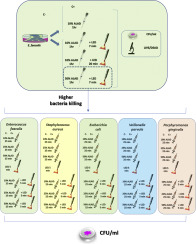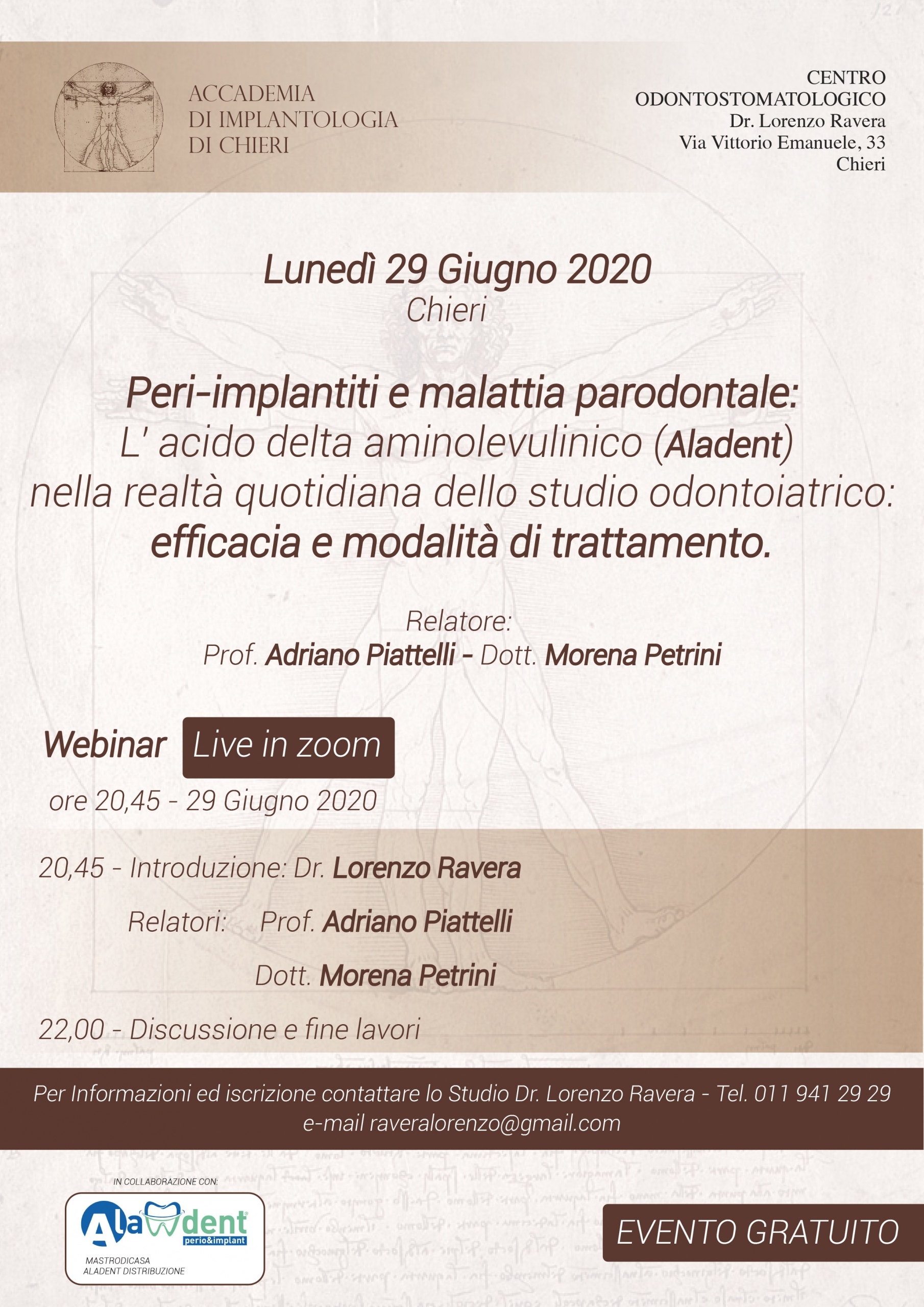Effects of a novel gel containing 5-aminolevulinic acid and red LED against bacteria involved in peri-implantitis and other oral infections
/in Pubblicazioni recenti /da q82rrfo3Highlights
• ALAD with LED irradiation exerted a potent antibacterial activity both Gram+ and -.
• The higher effect was obtained with 1 h of gel plus 7 min of LED irradiation.
• 25 min ALAD plus 5 min of LED led to a high antibacterial effect.
• A certain antibacterial effect was measure also without LED.
Antibiotic resistance is a major public health problem worldwide and the finding of alternative methods for eliminating bacteria is one of the prerogatives of medical research. The indiscriminate use of antibiotics in dentistry, especially for the treatment of peri-implantitis, could lead to superinfections.
Alternative methods, like photodynamic therapy mediated by the use of aminolevulinic acid and a red light has been largely described, especially in dentistry, but results were encouraging against Gram-positive bacteria, but limited against Gram-negative.
The effectiveness of photodynamic therapy mediated by a novel product containing aminolevulinic acid, Aladent (ALAD) has been tested in this in vitro study, against different types of bacteria particularly involved in the infections of the oral cavity and peri-implantitis. The novelty of ALAD is the marked hydrophilicity that should increase the passage of the molecule through the membrane pores of Gram-negative bacteria.
Considering the novelty of the product a preliminary experiment permitted to test the effectiveness against Enterococcus faecalis after 1 h of ALAD incubation at different concentrations, with or without different timings of LED irradiation. The count of CFUs and the live/dead observation with fluorescent microscopy showed a significant reduction and killing of bacterium.
Then, in the second stage, that could meet the necessity of effectiveness and the clinician’s requests to reduce the timing of treatment, ALAD, with and without irradiation, was tested on Staphylococcus aureus, Enterococcus faecalis, Escherichia coli, Veillonella parvula and Porphyromonas gingivalis.
In particular, the efficiency of different concentrations of the product after a 25 min incubation was tested with and without the adjunctive LED irradiation for 5 min.
A slight ALAD bactericidal effect was reported for all bacteria, also without LED irradiation, however, the most effective treatment was 25 min of 50% ALAD incubation followed by 5 min of a red LED.
The in vitro tests demonstrated that ALAD gel with LED irradiation exerts a potent antibacterial activity on different bacteria, both Gram-positive and Gram-negative.

Authors. M.Radunović M.Petrini T.Vlajic G.Iezzi S.Di Lodovico A.Piattelli S.D’Ercole
Newly formulated 5% 5-aminolevulinic acid photodynamic therapy on Candida albicans
/in Pubblicazioni recenti /da q82rrfo3Giuseppe Greco, Simone Di Piazza, Jiemei Chan, Mirca Zotti, Reem Hanna, Ezio Gheno, Angelina O. Zeckiy, Claudio Pasquale, Nicola De Angelis, Andrea Amaroli.
Highlights
- • Candida infections are responsible for an over of one million human deaths per year.
- • An increase in C. albicans resistance to common antifungal medications was described.
- • There is a need in seeking for alternative, effective and safe therapies.
- • Photodynamic therapy is a promising alternative approach, in treating oral biofilms.
- • Newly formulated 5% 5-aminolevulinic acid phototherapy inhibits Candida albicans.
Abstract
Background
A large number of systemic diseases can be linked to oral candida pathogenicity. The global trend of invasive candidiasis has increased progressively and is often accentuated by increasing Candida albicans resistance to the most common antifungal medications. Photodynamic therapy (PDT) is a promising therapeutic approach for oral microbial infections. A new formulation of 5-aminolevulinic acid (5%ALA) in a thermosetting gel (t) (5%ALA-PTt) was patented and recently has become available on the market. However, its antimicrobial properties, whether mediated or not by PDT, are not yet known. In this work we characterised them.
Methods
We isolated a strain of C. albicans from plaques on the oral mucus membrane of an infected patient. Colonies of this strain were exposed for 1 24 h, to 5%ALA-PTt, 5%ALA-PTt buffered to pH 6.5 (the pH of the oral mucosa) (5%ALA-PTtb) or not exposed (control). The 1 h-exposed samples were also irradiated at a wavelength of 630 nm with 0.14 watts (W) and 0.37 W/cm2 for 7 min at a distance of <1 mm.
Results and conclusion
The 5% ALA-PTt preparation was shown to be effective in reducing the growth of biofilm and inoculum of C. albicans. This effect seems to be linked to the intrinsic characteristics of 5%ALA-TPt, such acidic pH and the induction of free radical production. This outcome was significantly enhanced by the effect of PDT at relatively short incubation and irradiation times, which resulted in growth inhibition of both treated biofilm and inoculum by ∼80% and ∼95%, respectively.
Alphastrumenti Srl
Via Volontari del Sangue 4
20066 Melzo – MI
P.iva 06754120159
Email: info@aladent.it
Tel: +39.0295738540
Fax: +39.029551815


